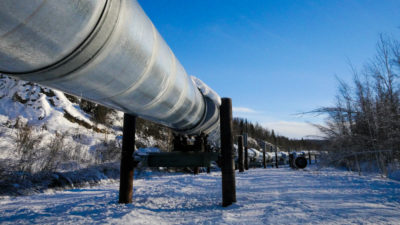As the price of crude has declined from more than $100 per barrel during the summer to a bottom of $45 back in January, it has affected the whole energy sector. Large producers are mostly using the opportunity to lay off workers and cut costs, since they tend to have solid balance sheets and stable production. Large integrated oil producers like Suncor or Husky are also enjoying better margins from their downstream businesses, including refining and retail sales.
For small producers, the situation is far more dire. Every small and mid-sized oil producer wants to expand and eventually become a large company, which is exceedingly difficult in this environment. Further adding to the pain is the fact that many of these companies borrowed heavily to expand during the good times, and are now burdened by that debt in a worse operating environment. If oil remains low, many of these companies will breach debt covenants, which is technically a default.
The issue for investors is identifying the companies that are likely to recover from this tough operating environment, and those that are at risk of failing under their debts. One company which is certainly struggling is Pacific Rubiales Energy Corp. (TSX:PRE), the Colombian-based oil and natural gas producer. Can this company pull itself out of this tailspin?
It’s really cheap
Upon first glance at the balance sheet, it’s obvious the stock is incredibly cheap. Shares currently trade hands at $3.79, while the company’s book value is US$13.48. Converted back to Canadian dollars, the company trades at approximately 23% of its book value. That’s about as cheap as you’re going to find.
The issue is the company’s debt. Although the debt is long-term with maturity dates between 2019 and 2025, the market is concerned about the $4.6 billion in future obligations. To put it in perspective, that’s about the same value as the company’s equity, making it one of the more indebted names in the sector.
But in the short-term, it shouldn’t be much of a concern. The company had more than US$500 million in cash as of the end of September, and it also has access to a $1 billion operating line of credit. The company is also conserving cash by cutting its capital expenditure program for 2015 to $1.5 billion, down from $2.3 billion last year.
But there are issues
One advantage to operating in South America is the low cost of production. According to the company’s most recent quarterly report, it had operating costs of just $35 per barrel. Thus, even at $50, the company can eke out a small profit. It also has the benefit of getting Brent crude pricing, which is currently sitting around $60 per barrel.
The big issue comes from its main source of production, the Rubiales field. The company’s lease on the field expires in mid-2016, and investors are beginning to get worried that the Colombian government won’t renew it. That would be devastating for the stock, but management has indicated they are confident about the lease getting renewed.
In the meantime, the company is aggressively expanding production into Mexico and Brazil. That’s a positive, but remember that exploration costs money, something that could be in short supply if the company is forced to tighten up some more.
A wild card?
There’s an interesting twist in this potential recovery story.
Alfa SAB, a Mexican conglomerate, has a 19% stake in the company. If that stake increases to 20%, under Canadian law it would be required to make a bid for the whole company. Considering the low price of this previously high-flying stock, it wouldn’t surprise me if Alfa was considering a bid for the whole company.
Should you invest?
Now that Brent has recovered to more than $60 per barrel, it looks like Pacific Rubiales isn’t in immediate danger of breaching its debt covenants. That’s good, but investors shouldn’t kid themselves—this is still a very risky stock. If you’re comfortable with the risk of another 50% loss, this stock easily has the potential to double, and then some.







